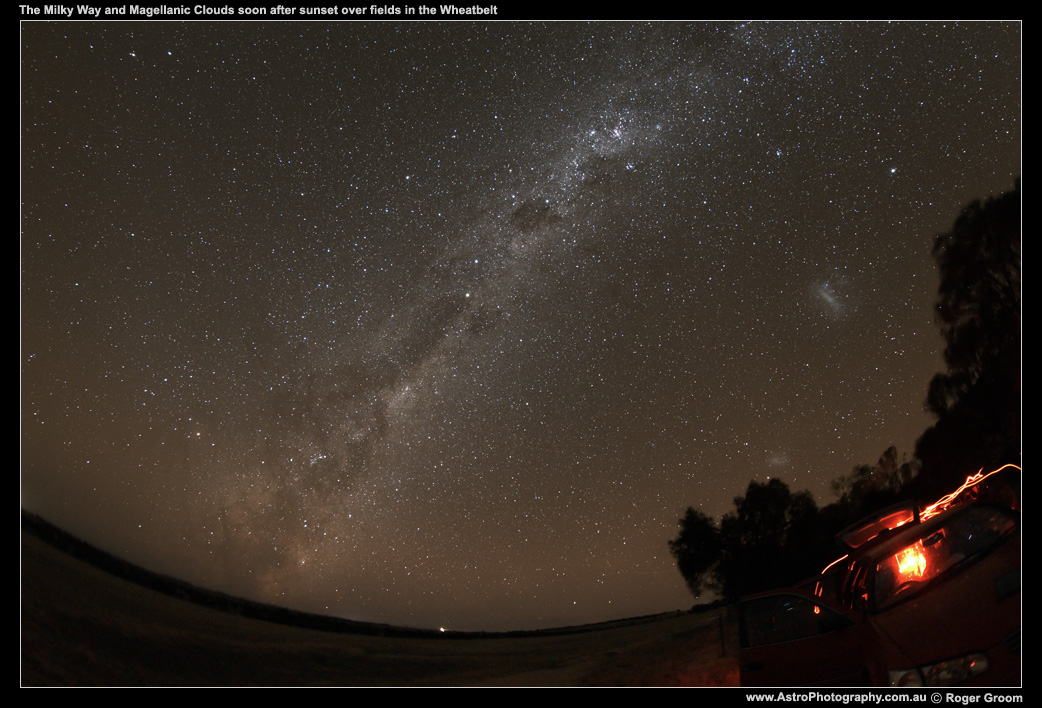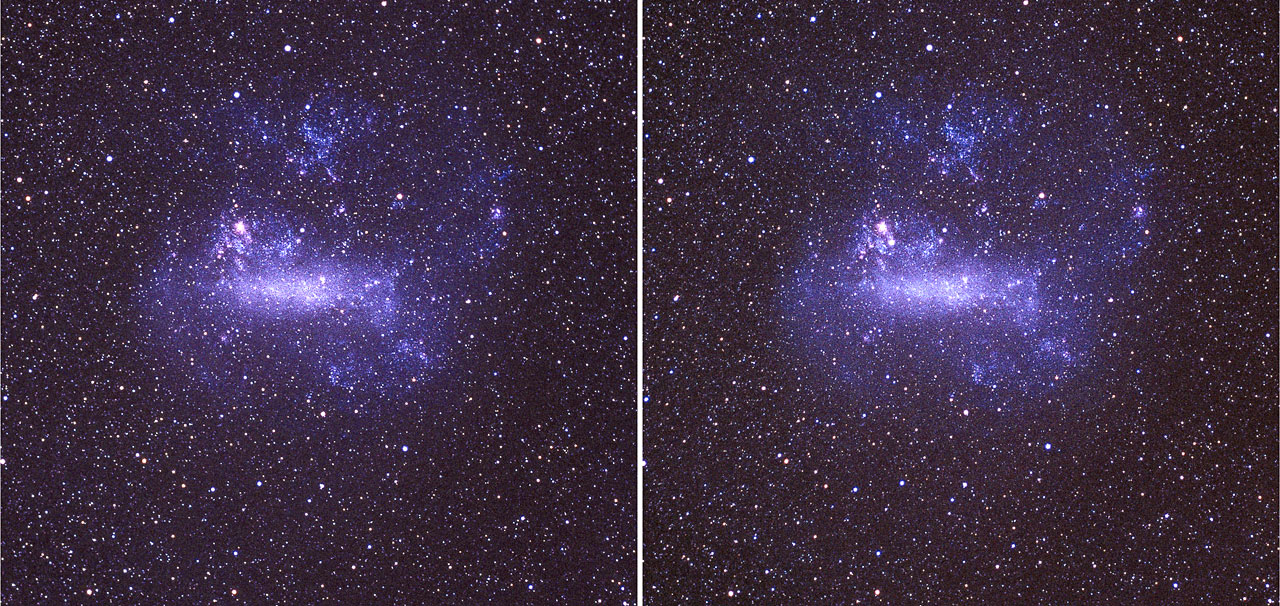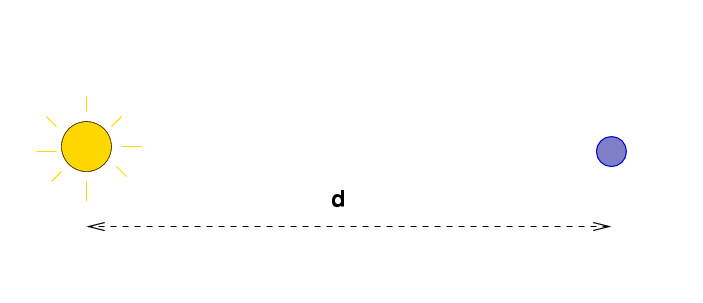
Image courtesy of Roger Groom
 Copyright © Michael Richmond.
This work is licensed under a Creative Commons License.
Copyright © Michael Richmond.
This work is licensed under a Creative Commons License.
A little information on some of my own research
The neutrino is an elusive sub-atomic particle: it hardly ever interacts with matter, which makes it very difficult to detect and study.
For many years after its discovery, it was thought to have no rest mass at all, like the photon. In recent years, physicists have determined that it does have mass, but only a small amount -- much much less than electrons.
Back in 1987, when the mass of the neutrino was still an open question, astronomers saw a star explode in a nearby galaxy.

Image courtesy of
Roger Groom

Image courtesy of
ESO
That explosion, plus a little bit of special relativity, allowed scientists to place strong limits on the mass of the neutrino; not really pin it down, but at least rule out some possibilities.
Before we look at their method, we need to do a little background calculation....

The Sun is roughly d = 1.50 x 1011 m away from the Earth. A sudden flare in the outer layers of the Sun produces a pair of photons with very high energies:
Photon A has energy E = 5 GeV = 8 x 10^(-10) J Photon B has energy E = 10 GeV = 16 x 10^(-10) J
The photons are created at exactly the same moment in the violent flare, and each one flies directly towards the Earth.
Q: How long does it take for photon A to reach the Earth?
How long does it take for photon B to reach the Earth?
Q: What is the difference in their arrival times?
Well, that wasn't too hard. All photons travel with the same speed, no matter what energy they have.
The Sun is roughly d = 1.50 x 1011 m away from the Earth. A sudden flare in the outer layers of the Sun produces a pair of PROTONs with very high energies. Recall that the rest-mass of a proton is mp = 1.67 x 10-27 kg.
Proton A has energy E = 5 GeV = 8 x 10^(-10) J Proton B has energy E = 10 GeV = 16 x 10^(-10) J
This might be a good time to figure out the γ (gamma) factor for each proton.
The protons are created at exactly the same moment in the violent flare, and each one flies directly towards the Earth.
Q: How long does it take for proton A to reach the Earth?
How long does it take for proton B to reach the Earth?
Q: What is the difference in their arrival times?
Interesting. The proton with higher energy has a slightly larger momentum, and a slightly larger speed. Since they are both moving at very nearly c, the difference in speeds can't be very large, which means that the difference in arrival times isn't very large, either.
But the high-energy proton reaches the Earth first.
The Sun is roughly d = 1.50 x 1011 m away from the Earth. A sudden flare in the outer layers of the Sun produces a pair of ELECTRONs with very high energies. Recall that the rest-mass of an electron is me = 9.1 x 10-31 kg.
Electron A has energy E = 5 GeV = 8 x 10^(-10) J Electron B has energy E = 10 GeV = 16 x 10^(-10) J
The electrons are created at exactly the same moment in the violent flare, and each one flies directly towards the Earth.
Q: How long does it take for electron A to reach the Earth?
(Hint: binomial expansion)
How long does it take for electron B to reach the Earth?
(Hint: binomial expansion)
Q: What is the difference in their arrival times?
(Hint: binomial expansion)
Gosh, the difference in arrival times for the electrons is very, very small. Why? Well, each electron is much more relativistic than the protons were -- much more of the total energy is kinetic, and the gamma factor for each electron is in the thousands. That means that each electron is travelling at very very nearly 299,792,458 m/s. The electron with more energy, B, is travelling just a tiny fraction of a meter per second faster than the lower-energy electron, A, so it does reach the Earth first; but only by a tiny fraction of a second.
We can summarize our results briefly.
If two particles are massless, they travel at the same speed. If two particles have mass, then more energetic one will travel faster. The difference in their speeds will be large, for particles with large mass; but the difference will shrink for particles with smaller and smaller masses.
 Copyright © Michael Richmond.
This work is licensed under a Creative Commons License.
Copyright © Michael Richmond.
This work is licensed under a Creative Commons License.